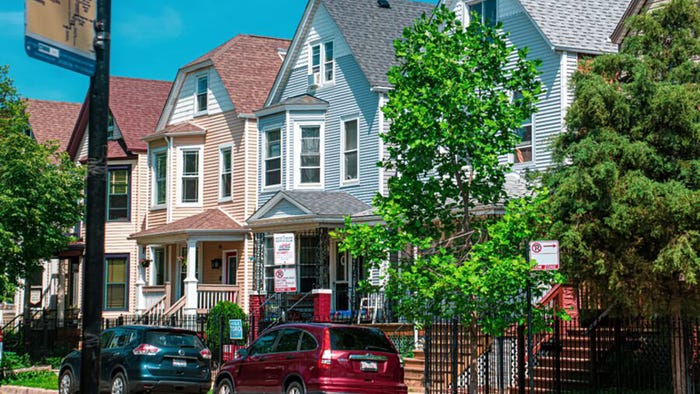Expanding housing choices: Local governments work together to help homeowners build ADUsExpanding housing choices: Local governments work together to help homeowners build ADUs
An inspirational collaborative model is being replicated in several California regions to create new housing and greater affordability by making it easier to build accessory dwelling units (ADUs).

An inspirational collaborative model is being replicated in several California regions to create new housing and greater affordability by making it easier to build accessory dwelling units (ADUs).
Over the last decade, comprehensive ADU policy reform at state and local levels in California, Oregon, Washington and elsewhere has created fertile ground for ADUs to grow. But homeowners are not developers, and building an ADU can be daunting. While some larger cities have created new programs and tools to help homeowners through the building process, smaller communities lack the capacity and resources to deliver similar support and have yet to get attention from the expanding ADU marketplace.
However, an experimental collaborative model that first took root in Napa and Sonoma counties in California is showing the promise of communities working together to help homeowners create new infill housing, with the potential for replicating the model around the state and beyond.
ADU interest grows
As regions across the United States and Canada seek solutions for housing shortages and high costs, ADUs are experiencing significant growth, particularly in states with supportive legislation. California, which has passed sweeping laws since 2017 to streamline ADU permitting, saw ADUs account for one in five new homes statewide and 44% of new builds in L.A. County in 2023.
Also known as "granny flats" or "backyard cottages," ADUs are self-contained homes smaller than the main residence and include a kitchen, bathroom and sleeping area.
A 2021 report by UC Berkeley’s California Center for Community Innovation showed that ADUs provide relatively affordable rental housing units. About half (51%) of California’s new ADUs serve as income-generating rental units, 18% provide no-cost housing to a relative or friend of the homeowner, and 8% were short-term rentals. Still, despite legislative reforms, the ADU revolution has been slow to reach low-income homeowners of color, and significant barriers remain to making ADUs a widespread solution for the housing affordability crisis.
Another area of ADU appeal stems from their sustainability benefits, including requiring minimal new infrastructure, adding affordable housing within existing neighborhoods, and promoting racial and socioeconomic diversity. They also provide opportunities for older homeowners to age in place, people with disabilities to live independently but close to caregivers, and new homebuyers to offset expenses with rental income.
But building an ADU can be overwhelming: navigating local codes, finding an architect, putting together financing, applying for permits and more. Jurisdictions that have been early adopters of ADUs as a housing solution have learned that making ADUs possible—through zoning changes and streamlined review—is often not enough to increase ADU production.
A collaborative model for smaller jurisdictions emerges
In California, while state mandates are a key driver for local ADU ordinances and programs, many communities have also embraced ADUs as part of their response to high levels of unmet housing need. In working to increase ADU production, they have learned that homeowners need other forms of support and have broadened their thinking about the role of local governments in providing it.
Larger, well-resourced jurisdictions are at the forefront of innovation in creating ADU tools and programs. But smaller jurisdictions are also looking to ADUs as a housing solution and are developing innovative collaborative models that increase their capacity to provide meaningful assistance to homeowners and support the creation of more ADUs.
The ADU resource centers emerging from these collaborative efforts leverage shared resources to deliver greater benefits for a lower cost than building an internal program. These centers are staffed by knowledgeable professionals who are allies to homeowners as well as liaisons for local planning and building departments. They can provide detailed technical assistance to staff and elected officials, while serving as a connective partner between public agencies and financial institutions.
ADU resource centers offer similar essential tools and services including:
Comprehensive multilingual websites and guidebooks
Information about local rules
A gallery of ADU floorplans to enable residents to browse plans for inspiration and connect with designers, including pre-approved standard ADU plans that can reduce permit costs and processing times
Project cost calculators
Educational workshops and one-on-one counseling sessions
Financial assistance programs, including partnerships with lenders, fee waivers and publicly funded forgivable loan programs
Comparing three ADU resource centers
The three ADU centers described below all resulted from increased local interest in ADUs due to state law changes as well as increased demand driven by remote workers and multi-generational housing needs. However, they differ in scope, organizational structure, funding models and local ADU market conditions.
ADU Center (formerly the Napa Sonoma ADU Center (launched in 2020))
The award-winning nonprofit started in 2020 with Napa and Sonoma counties and has since expanded, with Marin County joining in 2023.
Serving as a testing site for new ADU tools, the center partnered with Napa County in the development and operation of a groundbreaking Affordable ADU Loan program, a forgivable loan program that has pledged $5 million in direct financial assistance for affordable ADU housing in the county. In addition, the center partnered with a local credit union to develop ADU-specific financing for two populations often underserved by traditional financing: fixed income and new homeowners without much equity.
Since 2020, the center has completed 745 one-on-one consultations and provided direct assistance to more than 1,600 homeowners.
Polling of prospective ADU homeowners every six months on project status shows 74.5% are moving forward with their projects.
For the years 2020-2023, data from the state housing portal show 791 ADUs were completed in the Napa and Sonoma counties, representing 13% of new housing and with 21% categorized as low-, very low- or extremely low-income units.
Homeowners providing feedback rated the center’s consultation services at 96.8% of 4 or 5 stars.

Mother Lode ADU (launched in 2022)
The Mother Lode ADU in California shows what’s possible for collaboration across an even larger region—in this case four counties of mostly rural communities—and has won regional and national awards for its efforts.
Started in 2022 with support from a grant from the California Department of Housing and Community Development, Mother Lode ADU is now a partnership between the counties of Amador, Calaveras, Mariposa and Nevada, providing free resources and tools to help homeowners through the process of building an ADU.
The area is characterized by lower overall ADU demand compared with coastal areas and larger ADU size (800-1,200 square feet) due to more available land and lower construction costs per square foot ($200-$400) compared with Bay Area counties.
A 2023 survey showed people living in the Mother Lode region were familiar with and interested in ADUs for a variety of reasons, including providing housing for family, such as aging parents or adult children, and rental income.
For 2022 and 2023, 125 ADUs were completed in the four counties, representing 12% of new housing and with 45% categorized as low-, very low- or extremely low-income units.

ADU Resource Center of San Mateo County (launched in 2024)
The nonprofit ADU Resource Center of San Mateo County launched in October 2024 and is funded by San Mateo County jurisdictions and local foundations who are committed to increasing ADU production and affordability.
The center’s administrative support is provided by Community Planning Collaborative, a national leader in housing policy and ADU resources.
The county is characterized by high ADU demand driven by extreme housing costs and limited supply, strong interest for rental income given high local rents, and typically smaller units (400-800 square feet) due to lot size constraints.
The center will focus on increasing the production of affordable ADUs through a specialized program developed during the first year of operation.
In 2023, 419 ADUs were completed in the county, representing 22% of new housing and with 49% categorized as low-, very low- and extremely low-income units.
The goal of the local jurisdictions is to cumulatively produce more than 4,500 new ADUs during the 2023-2031 housing cycle.

Considerations for planning leaders
Jurisdictions considering similar collaborations should take these steps:
Analyze regional housing markets, perhaps through a regional housing needs assessment and/or a survey of existing ADU programs and policies, demographic trends and housing demand patterns.
Engage stakeholders, perhaps through an advisory committee of homeowners who have built ADUs, local government representatives, building officials, planners, architects, contractors, housing advocates and financial institutions. The group should consider: What is the local track record for ADU construction? How could expansion of ADUs help meet local housing needs? What are the obstacles to ADUs and what supports would help local homeowners? Where do people get help now, and what’s missing?
Identify strategic partnerships (if they preserve choice and diversity of solutions) and potential funding sources between local jurisdictions, local philanthropy and local design and building professionals. (Note of caution: Public-private partnerships that elevate a singular builder (prefab or conventional) or designer tend to be brittle and under-perform expectations.)
Review successful models from other communities while considering local needs. Consider a phased-in approach or pilot program to test new programs, tools and ways of working together.
Establish feedback mechanisms from homeowners and officials. Cross-functional partnerships between departments and agencies (e.g. local water/sewer agencies, fire departments, public works) can lead to great results.
Collaborate with neighboring jurisdictions to develop consistent regional regulations and shared resources.
Conclusion
The success of collaborative ADU resource centers in California demonstrates the effectiveness and efficiency of regional partnerships in providing meaningful support to homeowners in creating new ADUs and expanding the local housing supply. This model is particularly relevant as more states reform their housing policies to encourage ADU development. These centers show that smaller jurisdictions can pool resources and share expertise to deliver sophisticated tools and services that rival those available in larger cities.
As communities nationwide grapple with housing affordability and supply challenges, the collaborative ADU Resource Center model offers a practical blueprint for fostering sustainable, equitable neighborhood growth while leveraging limited public resources.
.jpg?width=100&auto=webp&quality=80&disable=upscale)

.jpg?width=400&auto=webp&quality=80&disable=upscale)









